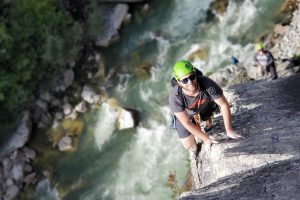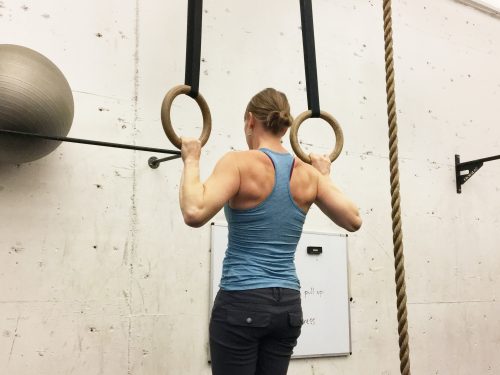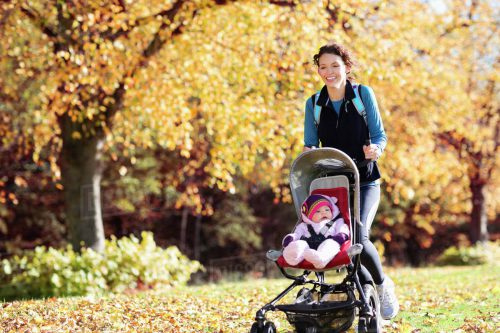As the snowline retreats and the rock starts to dry out, climbers in Revelstoke feel that familiar pull: time to trade ice axes and crampons for quickdraws and approach shoes. The transition from winter to spring is exciting—but it’s also when I see a sharp uptick in climbing-related injuries in the clinic.
If you’re shifting from ski touring/splitboarding, ice climbing, or indoor climbing into long days at Waterworld, Blanket Creek, or the Begbie Bluffs, here’s how to shift your training and expectations to match the season—and keep your body primed for a strong, injury-free season on the rock.
1. Respect the Transition: Ice and Snow Use Different Muscles
Winter activities—whether it’s swinging tools on ice, skinning uphill in Rogers Pass, or shredding at Revelstoke Mountain Resort—build endurance and strength, but they load the body differently than rock climbing. You may feel “fit,” but your fingers, shoulders, and forearms may not be ready for steep rock or repetitive crimping.
Physio Insight:
Just because your cardiovascular engine is ready doesn’t mean your connective tissues are. Tendons, pulleys, and rotator cuffs need time to adapt to rock-specific forces. Ease in with lower grades, longer rests, and a few weeks of capacity-building before pushing limits. Focus on one of the main reasons we climb—it’s just great to be outside on the rock!
2. Dial in Your Shoulder Stability, Finger Strength and Watch for Common Spring Injuries
After a winter of skiing/snowboarding and less time on rock (unless you’ve been training relentlessly at our amazing Quartzite climbing gym or at home), many climbers have some deconditioning in the smaller stabilizing muscles that matter most for outdoor projects. Jumping into powerful moves or high-volume days without rebuilding this base can lead to classic spring injuries. This time of year, I treat a lot of:
- Shoulder impingement (from under-prepared shoulder and scapular stabilizing muscles)
- Tendinopathy in elbows or biceps
- Pully sprains and/or finger flexor strains from high-load crimping too early
- Low back pain from sudden increases in bouldering volume or poor warm-up habits
Prevent it by:
- Adding 2–3 shoulder stability sessions per week (e.g., scapular retraction, external rotation, and serratus anterior work)
- Start a progressive fingerboard protocol—nothing max effort at first, but enough to prep your tissues for the loads ahead
- Don’t skip active recovery days—mobility, stretching, and antagonist work (push-ups, overhead press, finger/wrist extensions, etc.) go a long way
- Prioritize long warm-ups including shoulder engagement drills at the crag before pulling onto the rock
- Book a physio assessment if you’ve had issues over the winter or feel lingering stiffness

3. Mind Your Stoke: Spring is a Long Season
It’s tempting to go all-in as soon as the crags dry out, especially after a long winter. But peaking too soon—without building a base—can lead to mid-season burnout or injuries that bench you for the rest of the climbing season.
Physio Insight:
Treat spring like a building phase. Start with volume and movement focus. Minimize limit-pushing sessions to once a week. Gradually increase intensity over 4–6 weeks. Your body will thank you for the rest of the season!
4. Mobilize to Climb Well All Season Long
Mobility and flexibility are often treated as afterthoughts in climbing training—but as we shift into the rock season, they’re essential for preventing injury and improving movement efficiency. After months of skiing/snowboarding or indoor bouldering often there is stiffness in hips, shoulders, and thoracic spines. That stiffness limits reach, reduces balance, and increases stress on joints during tricky movement or falls.
Why It Matters:
Good mobility lets you high-step, twist, and flag without compensating through your lower back or shoulders. Poor mobility = more strain and less flow.
Mobility Essentials for Spring Climbers:
- Hips: Deep squat holds, 90/90 stretches, and high step-ups
- Thoracic spine: Open book stretches, foam rolling, cat-cow mobility drills
- Shoulders: Snow angels, overhead reach with band resistance, and chest-openers
- Incorporate 10–15 minutes of mobility work into your warm-up or cool-down (think of it as part of your injury insurance policy)

5. Balance Outdoor Stoke with Indoor Structure
Spring in Revelstoke can be unpredictable. One week it’s sunny and dry; the next, it’s pouring rain on your project. That’s okay—indoor climbing or structured gym sessions can support your outdoor goals.
Physio Insight:
- Blend your training: Use poor-weather days for fingerboard, core, and mobility work
- Maintain 1–2 indoor strength sessions a week to balance outdoor volume
- Don’t skip rest: more climbing = more recovery needed
Final Thought: Your Summer Season in Revelstoke Starts Now
How you treat your body in early spring sets the tone for your entire season. The key is to shift gradually, train smart, and listen to your body as it re-adapts to rock. Revelstoke offers exceptional climbing—but the real win is staying healthy enough to enjoy the full season.
Need Help Getting Back on the Rock?
Book a physiotherapy assessment with Justin at Red Cedar Physiotherapy and address your climbing-specific needs. Whether you’re rehabbing an injury, building strength, or just want a seasonal tune-up, we can help you stay strong and stoked all season long. See you out on the rock!






